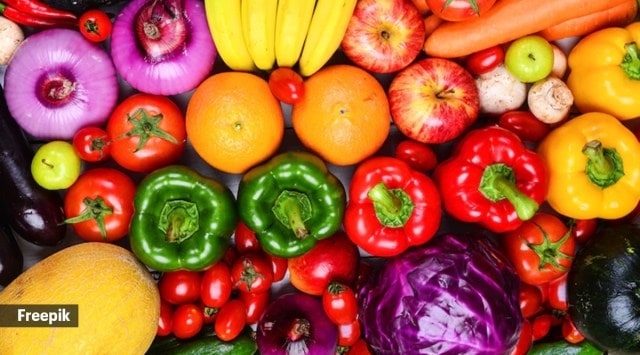
Dr Anoop Misra, chairman of Fortis-CDOC Center of Excellence for Diabetes, Metabolic Diseases, and Endocrinology, says that the study clearly shows the importance of colour in our diet. “If much of coloured fruits and vegetables are included in the diets, the risk of metabolic diseases, including diabetes and fatty liver, would be less,” he adds.
But, that is not all. The coloured fruits and vegetables can yield many other benefits. “The anti-inflammatory and lipid modulation properties of anthocyanins present in red and purple vegetables are well-known. They reduce inflammation and help in controlling blood pressure. They can also modulate the lipid metabolism of the body and hence are known to be heart-friendly,” says Ritika Samaddar, regional head, Department of Clinical Nutrition and Dietetics, Max Healthcare.
While the researchers from Finland talk about vegetables and fruits such as purple and red potatoes, sweet potatoes, radishes, cabbages, and carrots, Dr Samaddar asks people to stick to what is locally available. The vegetables, the Finnish study says, contain acylated anthocyanin that are better antioxidants than non-acylated anthocyanin and hence are better regulators of blood glucose and lipids.
“Yes, people can eat the purple cabbage or berries, but that is not sustainable. People must add colour to their plates using what is locally available in abundance – they are likely to be cheap and more nutritious,” she said. She gave examples of beetroot, brinjal, jamun and mulberries also known as shahtoot.
And, how much do we need to consume? Dr Samaddar says that neither is there an established limit of how much antioxidants one should consume, nor is there any reference on how much will get absorbed when one eats these fruits and vegetables. But, she says, the best is to add as much colour to your daily plate.
She said, “eat local, seasonal, and as fresh as possible.”
Story continues below this ad
She also suggests eating these fruits and vegetables raw or slightly cooked. “People can consume salads and juices with these fruits and vegetables. And beetroots can be consumed in tikkis too. But it is best to not wash coloured fruits and vegetables too much or overcook them because a lot of beneficial ingredients leach out in the process,” she adds.
What’s the science in the study?
Research has shown these pigments have strong antioxidant properties that prevent cell damage, boost the immune system, help reduce inflammation and offer heart health benefits. Studies have also linked anthocyanins to positive effects on vision and cognitive function.
It is important to understand that purple fruits and vegetables contain a significant number of acylated anthocyanins as opposed to non-acylated anthocyanins. A great amount of acylated anthocyanins can be found in purple potatoes, purple sweet potatoes, radishes, purple carrots and red cabbages, whereas bilberries and mulberries contain mostly non-acylated anthocyanins. Acylated anthocyanins are poorly absorbed in digestion, but they have probiotic properties and reduce the risk of diabetes more efficiently than non-acylated anthocyanins.
“The studies have shown that, in addition to changing physical and chemical properties, the acylation affects how the anthocyanins are absorbed and metabolised,” postdoctoral Researcher Kang Chen at Food Sciences Unit, University of Turku, Finland was quoted as saying.
Story continues below this ad
The acylated anthocyanins, according to researchers, are more effective antioxidants than the non-acylated anthocyanins, and they can also improve the intestinal barrier that enables the absorption of necessary nutrients. Furthermore, the acylated anthocyanins maintain gut microbiota homeostasis , suppress pro-inflammatory pathways, and modulate glucose and lipid metabolisms. “The plant’s genotype defines what kind of anthocyanins they produce. In general, purple vegetables contain many acylated anthocyanins. Also, purple potatoes, especially the Finnish variety called ‘Synkeä Sakari’, is abundant in acylated anthocyanins,” said Chen.
According to a report published in Science Daily, “Acylated anthocyanins travel through our bodies from the upper gastrointestinal tract to the colon where they are metabolised by the gut microbiota. Glucose transporters are involved in anthocyanin absorption, but different glucose transporters are responsible for the absorption of acylated and non acylated anthocyanins. The acylated and non-acylated anthocyanins also have different impacts on the enzymes involved in metabolism.”
📣 For more lifestyle news, follow us on Instagram | Twitter | Facebook and don’t miss out on the latest updates!































